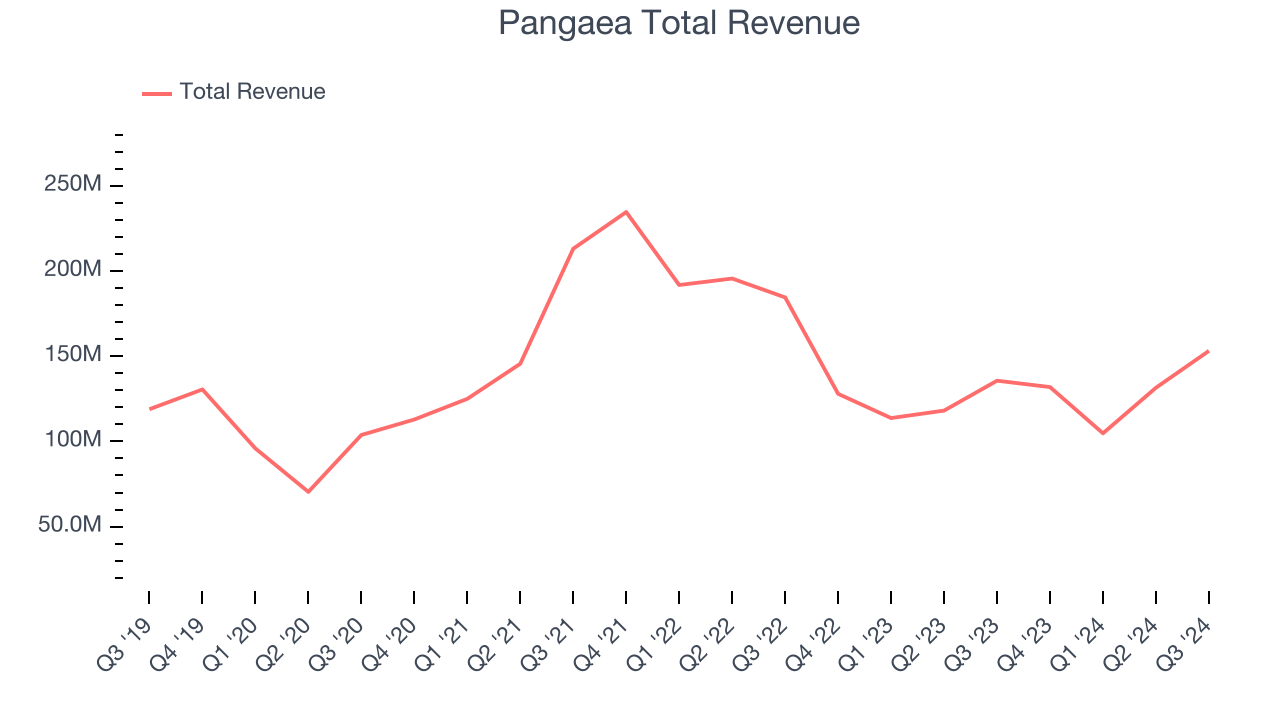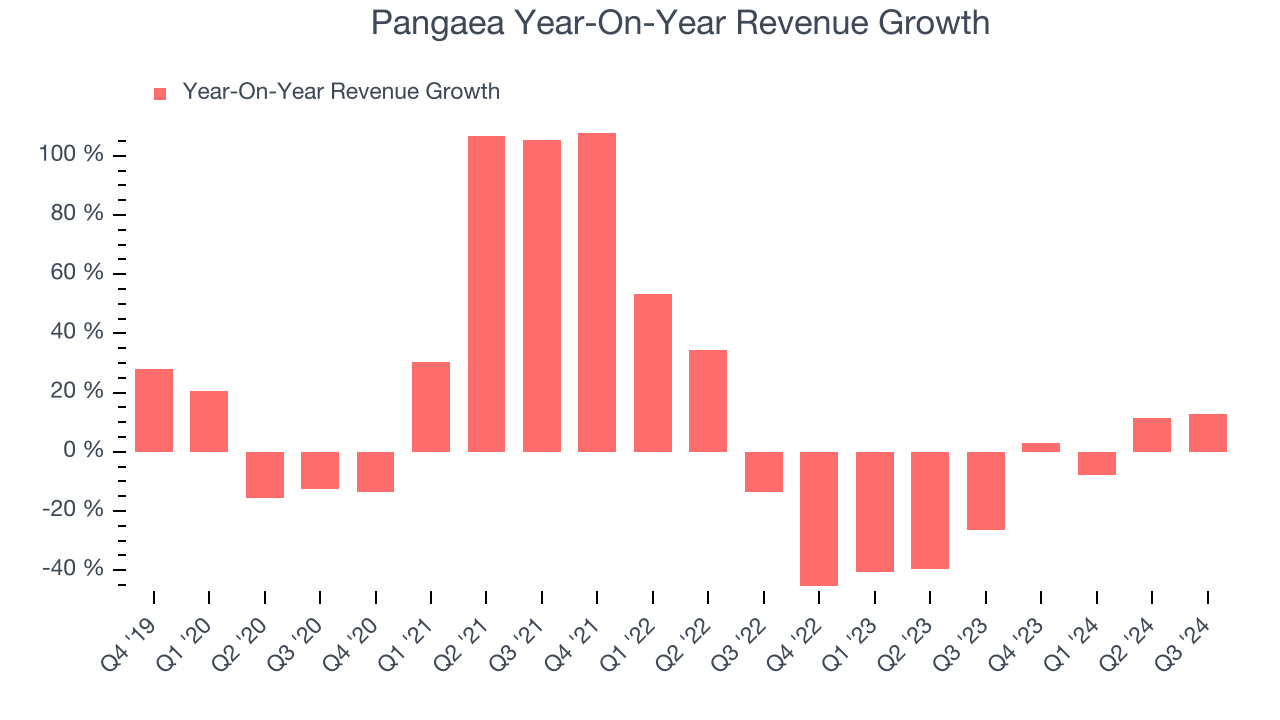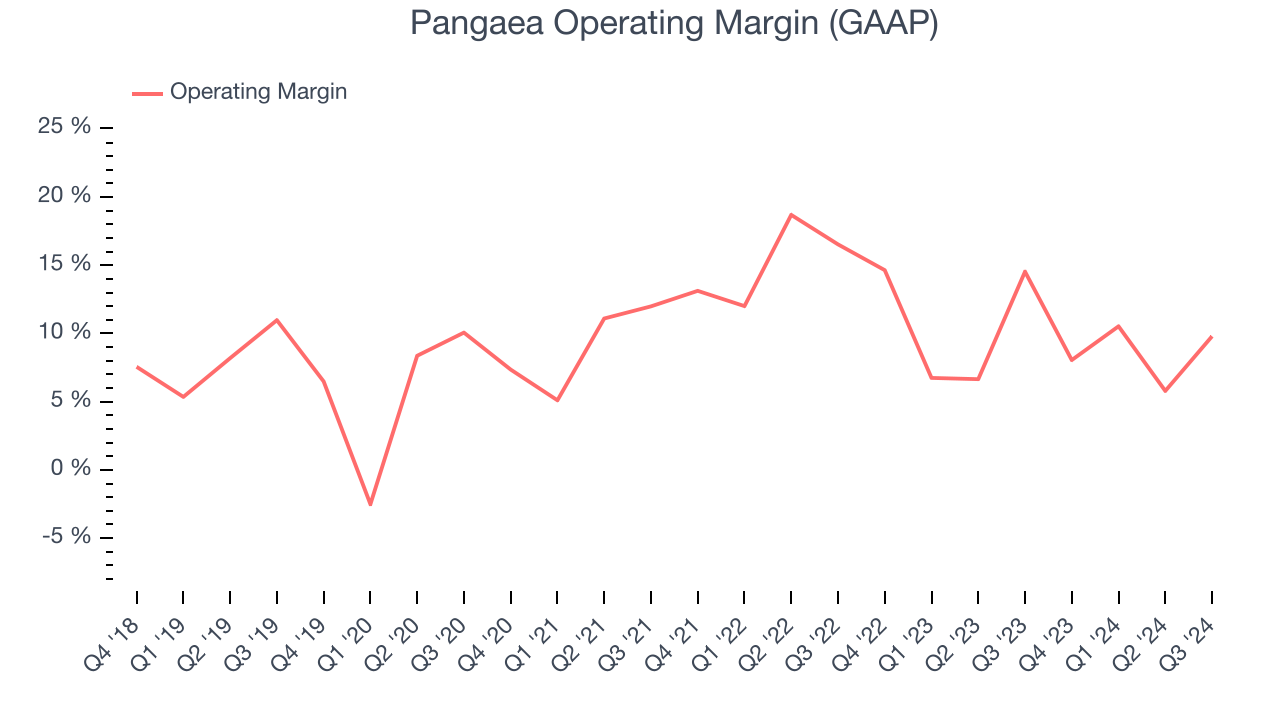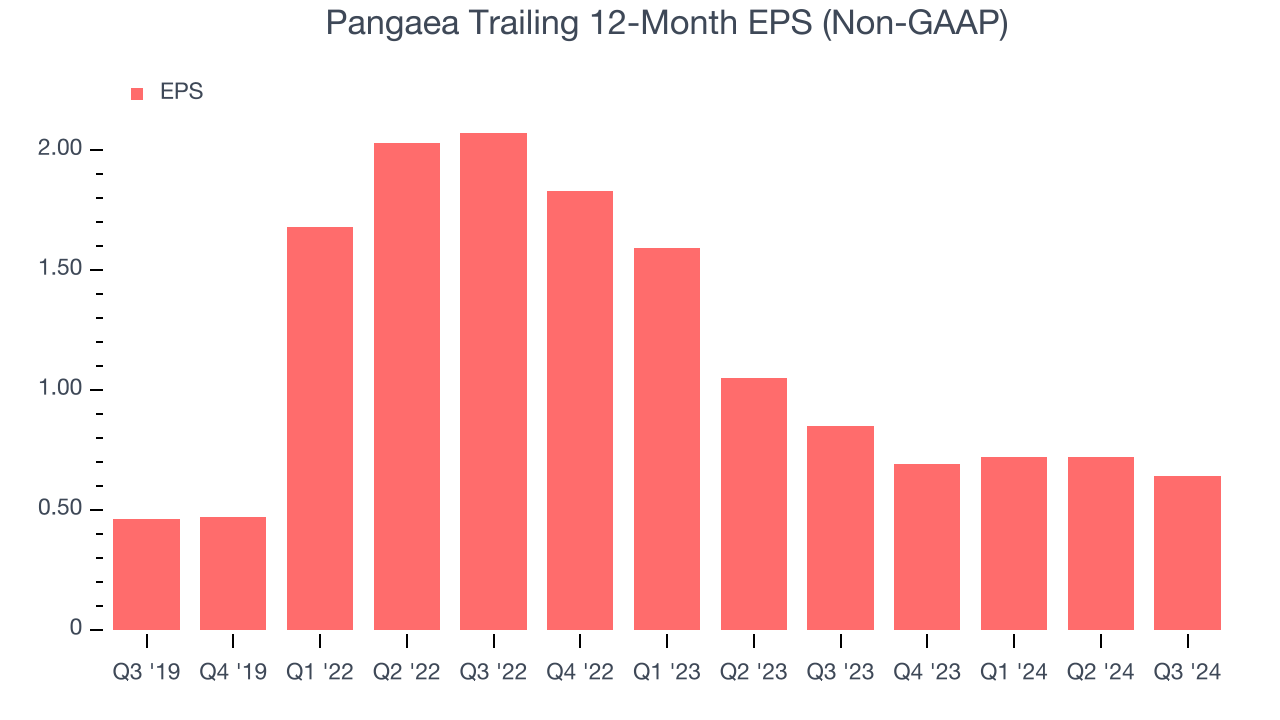Pangaea Logistics (NASDAQ:PANL) reported Q3 CY2024 results beating Wall Street’s revenue expectations, with sales up 12.9% year on year to $153.1 million. Its non-GAAP profit of $0.24 per share was 12.2% below analysts’ consensus estimates.
Is now the time to buy Pangaea? Find out by accessing our full research report, it’s free.
Pangaea (PANL) Q3 CY2024 Highlights:
- Revenue: $153.1 million vs analyst estimates of $141.3 million (8.3% beat)
- Adjusted EPS: $0.24 vs analyst expectations of $0.27 (12.2% miss)
- EBITDA: $23.92 million vs analyst estimates of $24.27 million (1.5% miss)
- Gross Margin (GAAP): 18.8%, down from 24.6% in the same quarter last year
- Operating Margin: 9.8%, down from 14.5% in the same quarter last year
- EBITDA Margin: 15.6%, down from 20.7% in the same quarter last year
- Free Cash Flow was -$28.58 million, down from $16.13 million in the same quarter last year
- Market Capitalization: $316.1 million
"Strategically, this has been a historic year for Pangaea, one in which we've continued to advance our value creation strategy through a combination of targeted fleet expansion, strong operational execution, and accretive inorganic growth," stated Mark Filanowski, Chief Executive Officer of Pangaea Logistics Solutions.
Company Overview
Established in 1996, Pangaea Logistics (NASDAQ:PANL) specializes in global logistics and transportation services, focusing on the shipment of dry bulk cargoes.
Marine Transportation
The growth of e-commerce and global trade continues to drive demand for shipping services, presenting opportunities for marine transportation companies. While ocean freight is more fuel efficient and therefore cheaper than its air and ground counterparts, it results in slower delivery times, presenting a trade off. To improve transit speeds, the industry continues to invest in digitization to optimize fleets and routes. However, marine transportation companies are still at the whim of economic cycles. Consumer spending, for example, can greatly impact the demand for these companies’ offerings while fuel costs can influence profit margins. Geopolitical tensions can also affect access to trade routes, and if certain countries are banned from using passageways like the Panama Canal, costs can spiral out of control.
Sales Growth
A company’s long-term performance can give signals about its business quality. Even a bad business can shine for one or two quarters, but a top-tier one grows for years. Over the last five years, Pangaea grew its sales at a mediocre 6.3% compounded annual growth rate. This shows it couldn’t expand in any major way, a rough starting point for our analysis.

Long-term growth is the most important, but within industrials, a half-decade historical view may miss new industry trends or demand cycles. Pangaea’s history shows it grew in the past but relinquished its gains over the last two years, as its revenue fell by 19.6% annually. Pangaea isn’t alone in its struggles as the Marine Transportation industry experienced a cyclical downturn, with many similar businesses seeing lower sales at this time. 
This quarter, Pangaea reported year-on-year revenue growth of 12.9%, and its $153.1 million of revenue exceeded Wall Street’s estimates by 8.3%.
Looking ahead, sell-side analysts expect revenue to grow 15.1% over the next 12 months, an improvement versus the last two years. This projection is admirable and indicates its newer products and services will spur faster growth.
When a company has more cash than it knows what to do with, buying back its own shares can make a lot of sense–as long as the price is right. Luckily, we’ve found one, a low-priced stock that is gushing free cash flow AND buying back shares. Click here to claim your Special Free Report on a fallen angel growth story that is already recovering from a setback.
Operating Margin
Operating margin is a key measure of profitability. Think of it as net income–the bottom line–excluding the impact of taxes and interest on debt, which are less connected to business fundamentals.
Pangaea has managed its cost base well over the last five years. It demonstrated solid profitability for an industrials business, producing an average operating margin of 10.6%. This result was particularly impressive because of its low gross margin, which is mostly a factor of what it sells and takes huge shifts to move meaningfully. Companies have more control over their operating margins, and it’s a show of well-managed operations if they’re high when gross margins are low.
Looking at the trend in its profitability, Pangaea’s annual operating margin rose by 2.9 percentage points over the last five years, showing its efficiency has improved.

This quarter, Pangaea generated an operating profit margin of 9.8%, down 4.7 percentage points year on year. Since Pangaea’s gross margin decreased more than its operating margin, we can assume its recent inefficiencies were driven more by weaker leverage on its cost of sales rather than increased marketing, R&D, and administrative overhead expenses.
Earnings Per Share
Analyzing revenue trends tells us about a company’s historical growth, but the long-term change in its earnings per share (EPS) points to the profitability of that growth – for example, a company could inflate its sales through excessive spending on advertising and promotions.
Pangaea’s unimpressive 6.8% annual EPS growth over the last five years aligns with its revenue performance. On the bright side, this tells us its incremental sales were profitable.

Like with revenue, we analyze EPS over a shorter period to see if we are missing a change in the business.
Pangaea’s two-year annual EPS declines of 44.4% were bad and lower than its two-year revenue performance.In Q3, Pangaea reported EPS at $0.24, down from $0.32 in the same quarter last year. This print missed analysts’ estimates. Over the next 12 months, Wall Street expects Pangaea’s full-year EPS of $0.64 to grow by 37.5%.
Key Takeaways from Pangaea’s Q3 Results
We were impressed by how significantly Pangaea blew past analysts’ revenue expectations this quarter. On the other hand, its EPS missed and its EBITDA fell short of Wall Street’s estimates. Overall, this quarter could have been better. The stock traded down 2.6% to $6.60 immediately following the results.
Big picture, is Pangaea a buy here and now? When making that decision, it’s important to consider its valuation, business qualities, as well as what has happened in the latest quarter. We cover that in our actionable full research report which you can read here, it’s free.
